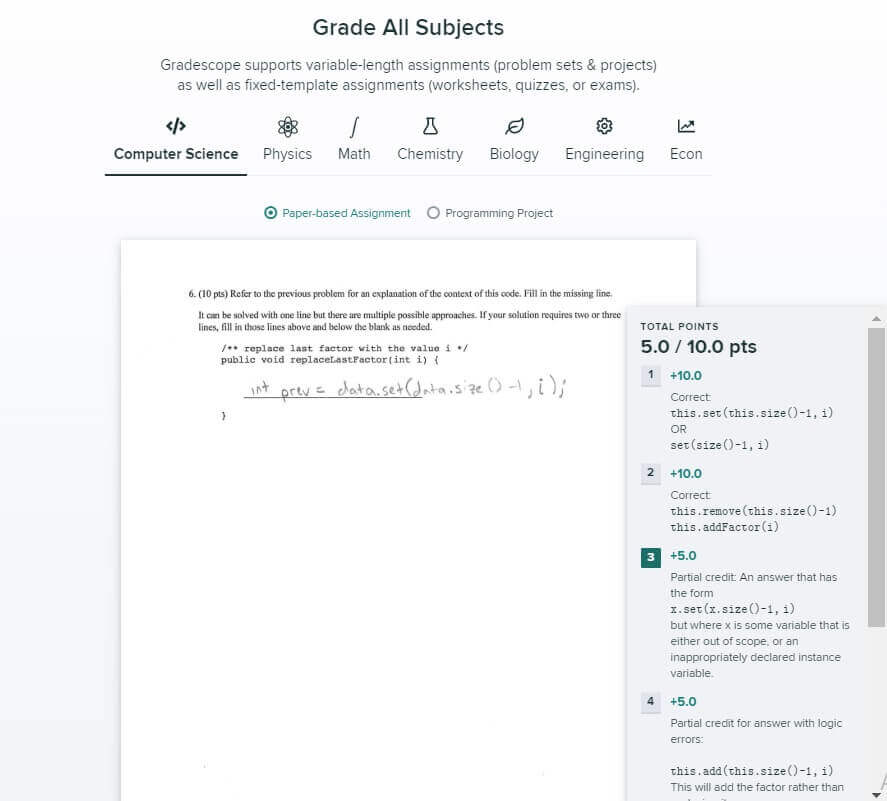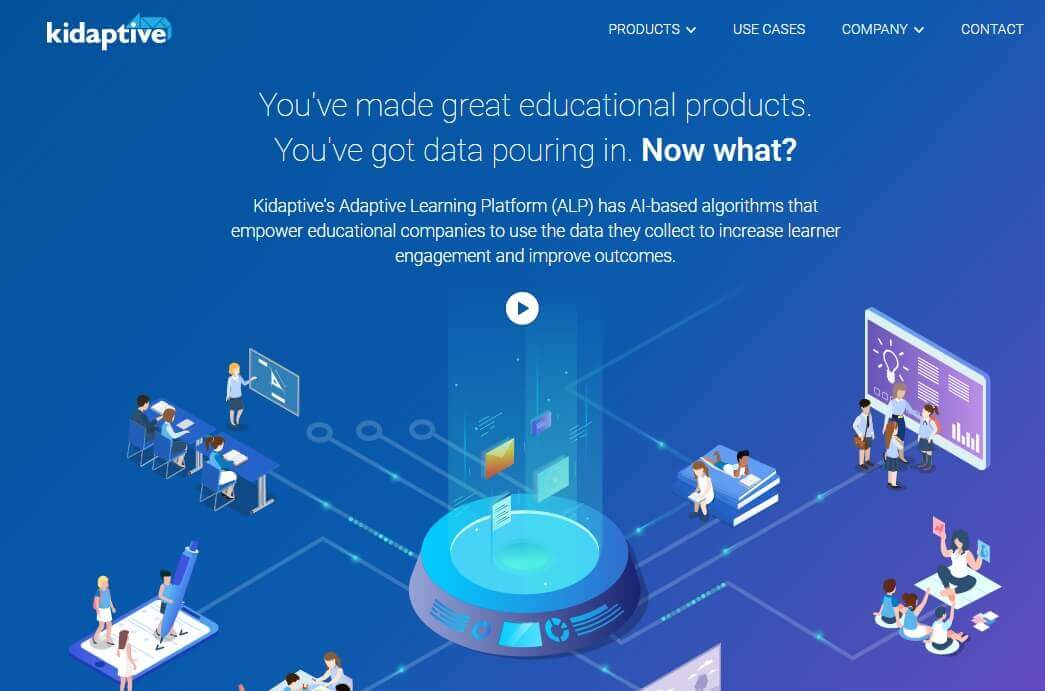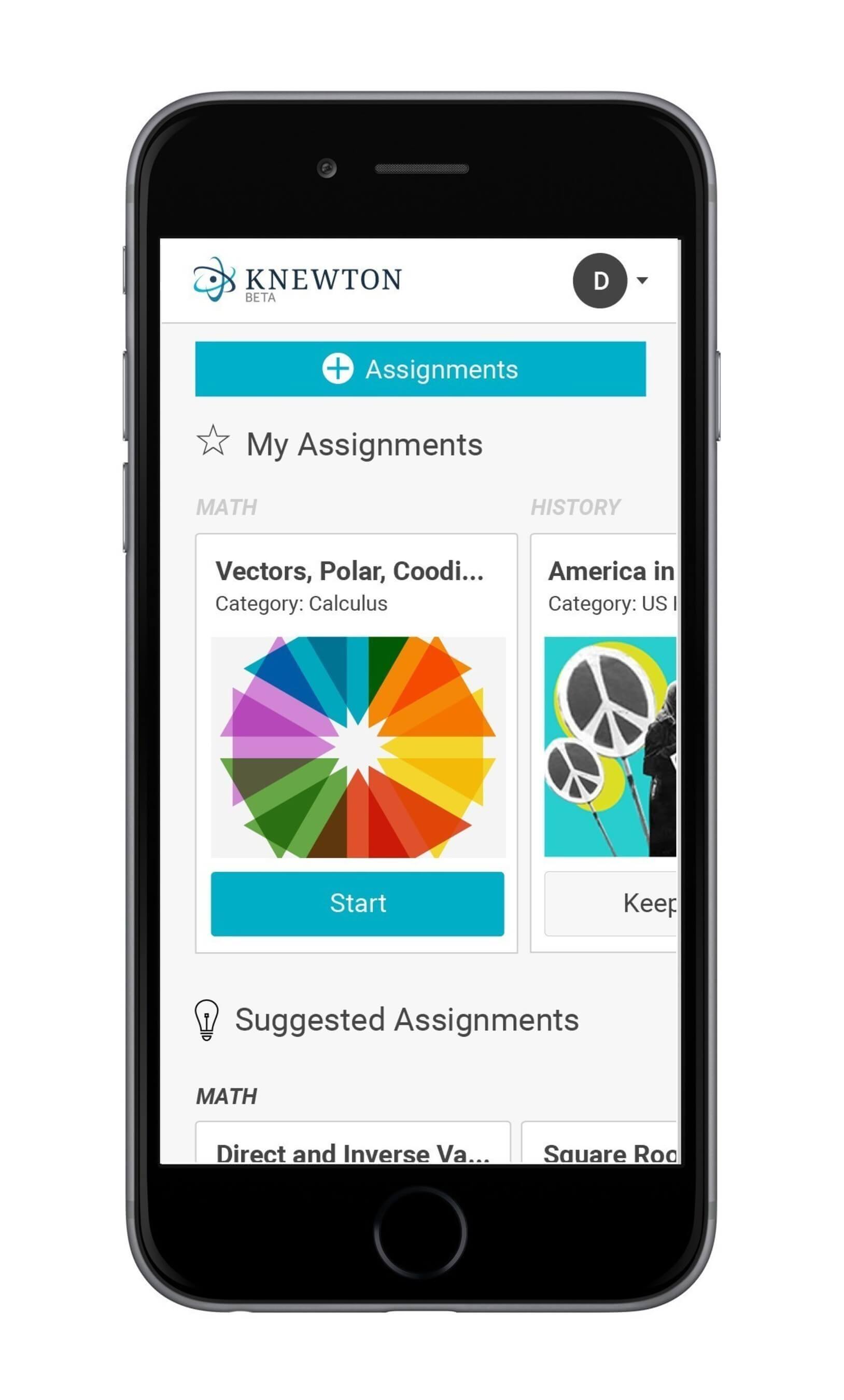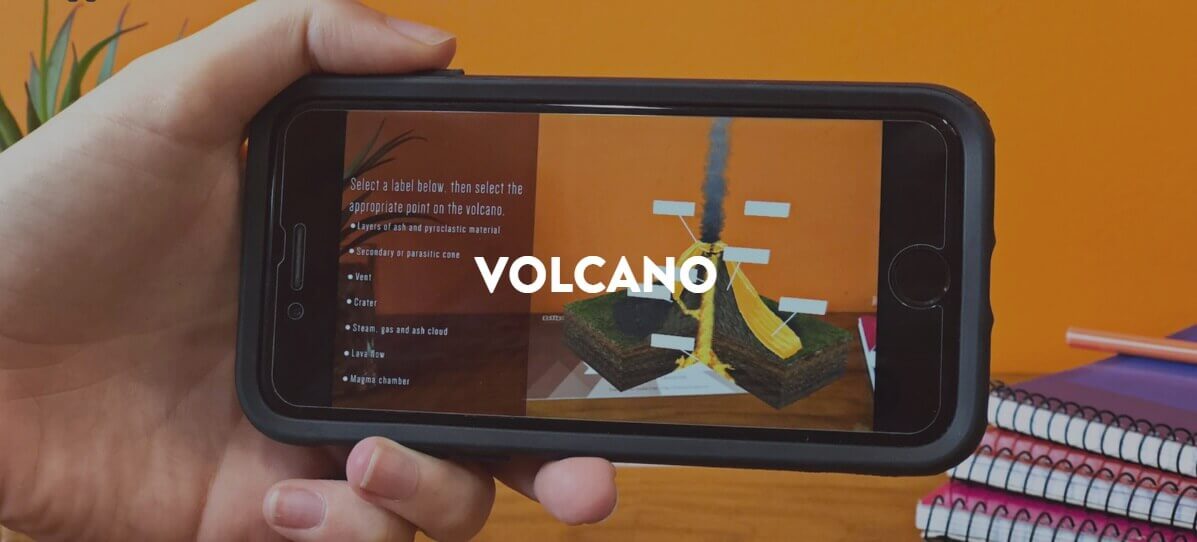- What is wrong with the traditional education process?
- Essential applications of AI in the education sector
- AI algorithm for Automatic Grading & Performance Assessment
- Adaptive Learning Platform with AI algorithm
- Computer vision and AR for interactive materials
- Tutoring chatbots with Natural Language Processing
- Speech Recognition for eLearning platforms
- How to develop your Artificial Intelligence and Education software
- Receive advantages of AI technology in education with The APP Solutions
Do you remember your school years? I bet at least once you stared at clocks on the wall and counted every second till the end of the lesson because you didn’t like the subject. Or you stared at the playground, imagining how you and your friends will play there during the break because the teacher couldn’t hold your attention.
Teaching methods haven’t changed a lot since that time, things have only gotten worse. Modern teachers have to compete for students’ attention with smartphones, PSPs, and other gadgets that are more engaging than geometry, literature, and math. After an exhausting day at school, teachers go home with a stack of student essays, dreaming about robots that will check them. Fortunately, thanks to AI in education, such a dream will soon become a reality. Forecasts predict that the Artificial Intelligence Market in the US Education Sector will reach a value of almost USD 85 million by 2022. This means that students and teachers will receive the advantages of AI in education, including checking homework, grading students, customizing learning programs, finding the gap in knowledge, and answering questions 24/7.
If you are looking for ideas on how to implement artificial intelligence in your school or university, you are in the right place. In this article, you will find the main AI and Machine Learning applications in the education sector and a detailed guide on how to develop Artificial Intelligence education software.
What is wrong with the traditional education process?
The public education system was developed during the industrial age. Thus, it has been around for more than 150 years. Since that time many things have changed a lot. Modern society no longer needs people with a limited view of things. Instead, people with critical thinking, creativity, and revolutionized approaches will rule the world in the future. Unfortunately, modern education is not ready to teach us in a new way, which results in the following critical issues:
Too many routines and administrative tasks for teachers
In the past, only wealthy people could provide their children with education. Fortunately, today education is accessible to anyone, and even people with low incomes can get basic knowledge in public schools. The bad thing is the increased number of students has resulted in more administrative tasks for teachers. Thus, teachers are burdened with marking and grading assessments, preparing teaching materials, and checking the facts of students’ assignments.
One-size-fits-all educational programs
Each person is unique. Some of us are future stars of theoretical physics and cosmology, while others are more talented in arts, literature, and music. The essential goals of education are to find unique talents and develop them. However, most educational programs do not meet the needs of the modern world, continuing to teach us in the same way.
Get Personalized Help with Your AI Challenge
Contact UsLow engagement in classrooms
What will you choose, play your favorite game on PS, or learn how to calculate integrals? Most of us will choose the first option, as do modern students. There are many different types of entertainment that bring more positive emotions than lessons. Thus, teachers need to try harder to make their subjects more interesting than games, series, and bloggers from YouTube.
Lack of mentoring
When I was at school, most of the questions about the subject appeared when I did my homework. Thus, to understand or complete the task, I waited for the next day when the teacher could answer my questions. In most cases, the teacher was too busy because my class contained over 30 students who also needed attention. Most students experience the same, especially if the class includes 50 or even 80 students which impacts their academic performance.
Low-quality education in remote areas
Not all of us are fortunate to be born in Cambridge, Oxford, or Stanford to receive a high-quality education. The issue of providing high-quality education also concerns rural areas, remote regions, and developing countries that have not enough resources.
Fortunately, AI and Machine Learning in education promise to solve these pressing challenges and transform the education industry.
Essential applications of AI in the education sector
Such AI-powered solutions as Machine Learning, Natural Language Processing, Voice, and Speech recognition are widely used nowadays. You interact with them when you book flight tickets via a chatbot, watch Netflix series suggested by the ML algorithm, or ask Siri to set your alarm clock. Now, let’s explore what Artificial Intelligence can do for the Education sector.
AI algorithm for Automatic Grading & Performance Assessment
You can leverage the power of Artificial Intelligence to save time on automating the process of checking tests and grading students. One example of such an education AI solution is the Century Tech platform. It applies data analytics and cognitive neuroscience to identify a student’s gap in knowledge, suggests learning material, and automatically marks answers. Teachers can monitor individual students and whole-class performance via a Dashboard.
Apart from tests, AI can be applied for grading handwritten students’ work. One example is Gradescope, an online grading app developed by a group of UC Berkeley researchers. To train the algorithm to identify the numerical, single word, and one-line answers, developers used cuDNN, a Deep Neural Network library, and TensorFlow, a computational framework for building machine learning models. As a result, the app shortens grading time from 50 to 75%.

[Source]
Adaptive Learning Platform with AI algorithm
You can develop an AI-based learning platform that will check the skills and the learning abilities of each student and provide them with a personalized curriculum. Also, a smart algorithm can analyze the way each student interacts with learning material, and gather this data into reports so you can get insights into the learning abilities of each student.
One example of Artificial Intelligence in higher education is Kidaptive, a cloud-computing platform that provides adaptive learning programs, and predicts academic performance, by applying underlying patterns and relationships. For suggesting the next task to learners, the Artificial Intelligence education platform uses Bayesian-IRT psychometric framework. In this way, Kidaptive keeps students involved in the learning process.

Another example is Knewton, a platform with adaptive learning capabilities for higher education. The software leverages AI and ML to find gaps in a student’s knowledge and remediate them with adaptive assignments while students complete their courses.

[Source]
Computer vision and AR for interactive materials
We learn better with the visual materials at hand. Thanks to subject visualization, you can easily explain complex material and ensure your students keep up with the learning program. For object visualization, consider leveraging Computer Vision, a subfield of Artificial Intelligence. To make machines accurately identify and classify objects, Computer Vision uses deep learning models and digital images from cameras and videos.
The Blippar company applies Computer Vision for education. To make the classroom experience even more fascinating for students, developers empowered AI and education software with AR (augmented reality) and 3-D models. In this way, the company can visualize learning materials on biology, geography, and physics.

[Source]
Download Your Free eLearning Software Development Guide
Download NowTutoring chatbots with Natural Language Processing
To support students outside of classes, you can develop a tutoring chatbot empowered by Natural Language Processing technology. The main benefit of NLP in smart assistants is that the AI algorithm understands a student’s query and answers with a non-pre-scripted text. Such chatbots are popular in assisting students during the admission process and in getting the right information on academic material. Chatbots even inform students about the new curriculum and provide campus information during their first year at the university. Such a chatbot is available 24/7, unlike human personal.
The most outstanding example of implementing chatbots in education is Jill Watson, a teacher assistant powered by IBM’s AI-system, adopted by the Georgia Institute of Technology. Ashok Goel, a Computer Science Professor, developed such a Virtual Teaching Assistant to answer students’ routine queries. For this goal, the professor trained Jill Watson’s machine learning algorithm with over 40,000 forum posts. As a result, the chatbot interacted with students in a human-like manner and students didn’t realize they were interacting with the Artificial Intelligence algorithm. Watch Ashok Goel’s speech about Jill Watson, an AI teaching assistant, at TEDx Talks.
Speech Recognition for eLearning platforms
eLearning enables curious people from around the world to receive knowledge online without leaving their homes. However, statistics show that only 7% of people enrolled in online courses actually complete them. The issue is a lack of student engagement because most online courses are pre-recorded video lectures. In this case, Artificial Intelligence in eLearning and Speech Recognition can improve engagement.
Speech Recognition, the integral part of the future of eLearning, is handy for learning foreign languages. The algorithm can recognize what students say and score their pronunciation. Also, you can apply this technology to create subtitles in real-time mode and provide students from all over the world with learning material in their native languages.
One example of the use of AI in eLearning is Virtual Speech, a Speech Recognition provider for eLearning platforms aimed at teaching students to practice their speeches or presentations on a virtual stage. Apart from Speech recognition, the VirtualSpeech app also uses linguistic analytics and personality theory to score how the audience is perceiving students.
[Source]
Now that you know about the main applications of Artificial Intelligence in education, let’s see how to empower your educational organization with a smart solution.
How to develop your Artificial Intelligence and Education software
So, what steps should you facilitate before providing your students and teachers with the benefits of Artificial Intelligence? To help you in developing a comprehensive AI or ML solution, we gathered a simple six-step guide.
Step 1. Shape project idea
Before hiring AI and ML developers, you need to decide what Artificial Intelligence software you want to develop. To this purpose, you can choose among the applications of Artificial Intelligence in education listed above, or combine them in one holistic platform. You need to have a clear understanding of what your software does, how it interacts with students, where the data is stored, and how it improves the educational process.
Step 2. Hire AI developers
Once you shape the idea for your AI education software, you can start searching for an AI dev team. When filling in the contact forms on developers’ websites, try to give as many details about your project as possible so that the team can come up with a precise project estimation. After you sign the NDA (non-disclosure agreement), you and your team enter the negotiation stage to define the project scope.
Step 3. Select the model
Based on your project’s use case, the team selects a technological solution. Most machine learning projects, such as personalized learning platforms, will use existing algorithms and train them with your dataset. At this stage, you need to ensure that the ML model meets the goal of your project and includes all the necessary features.
Step 4. Gather high-quality dataset for AI algorithm
To teach your algorithm to perform particular tasks, such as answering student queries, you need to provide developers with a high-quality training dataset in the format of text documents, excel files, FAQ section from your website, teaching program, and so on.
Step 5. Test your AI solution
Before you receive your AI solution for education, developers will test the model using a ready-made dataset to ensure that the algorithm works in the way it should. Apart from algorithms, the development team will create a user-friendly interface for your AI-based learning platform.
Step 6. Integrate into the education process
The development team will integrate your Artificial Intelligence software into your ecosystems, such as ERP, a website, or a mobile app. Once the AI project is up and running, you can measure AI’s impact on education and student progress in your educational institution.
Related reading:
Case Study: Video Streaming App Proof of Concept
Receive advantages of AI technology in education with The APP Solutions
Educational organizations should modernize learning programs to meet the demands of modern society. Artificial Intelligence remains the most prospective niche for investment, not only for primary schools but also for universities and online learning platforms.
AI subfields, such as Natural Language Processing, Machine Learning algorithms, Speech and Image recognition, improve the learning process by increasing student engagement, providing personalized programs, and supporting students with relevant information 24/7. At the same time, software with Artificial Intelligence for automatic grading and performance assessment helps teachers to save time on routine tasks.
If this article inspired you to develop EdTech AI software and you are looking for advice from AI developers, we are here to help.
Receive Estimates of Your Online Learning Project
Use Project Cost Calculator